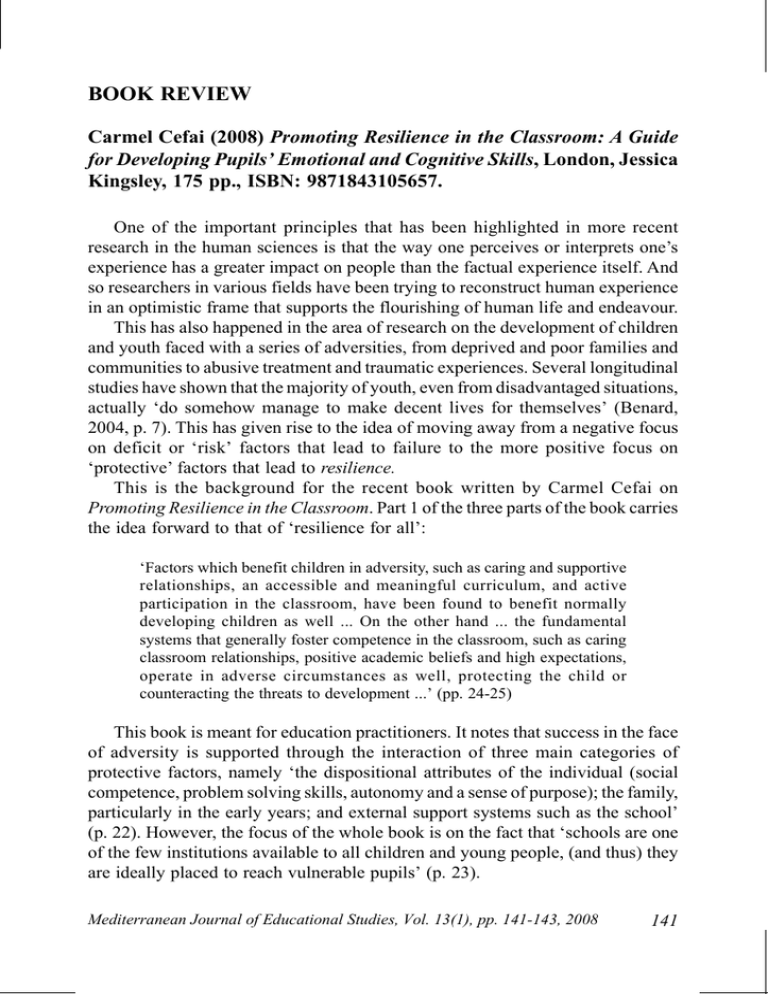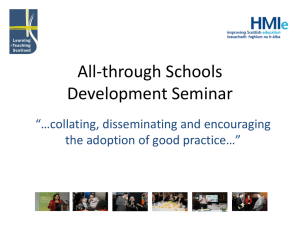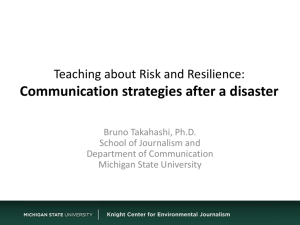BOOK REVIEW Promoting Resilience in the Classroom: A Guide
advertisement

BOOK REVIEW Carmel Cefai (2008) Promoting Resilience in the Classroom: A Guide for Developing Pupils’ Emotional and Cognitive Skills, London, Jessica Kingsley, 175 pp., ISBN: 9871843105657. One of the important principles that has been highlighted in more recent research in the human sciences is that the way one perceives or interprets one’s experience has a greater impact on people than the factual experience itself. And so researchers in various fields have been trying to reconstruct human experience in an optimistic frame that supports the flourishing of human life and endeavour. This has also happened in the area of research on the development of children and youth faced with a series of adversities, from deprived and poor families and communities to abusive treatment and traumatic experiences. Several longitudinal studies have shown that the majority of youth, even from disadvantaged situations, actually ‘do somehow manage to make decent lives for themselves’ (Benard, 2004, p. 7). This has given rise to the idea of moving away from a negative focus on deficit or ‘risk’ factors that lead to failure to the more positive focus on ‘protective’ factors that lead to resilience. This is the background for the recent book written by Carmel Cefai on Promoting Resilience in the Classroom. Part 1 of the three parts of the book carries the idea forward to that of ‘resilience for all’: ‘Factors which benefit children in adversity, such as caring and supportive relationships, an accessible and meaningful curriculum, and active participation in the classroom, have been found to benefit normally developing children as well ... On the other hand ... the fundamental systems that generally foster competence in the classroom, such as caring classroom relationships, positive academic beliefs and high expectations, operate in adverse circumstances as well, protecting the child or counteracting the threats to development ...’ (pp. 24-25) This book is meant for education practitioners. It notes that success in the face of adversity is supported through the interaction of three main categories of protective factors, namely ‘the dispositional attributes of the individual (social competence, problem solving skills, autonomy and a sense of purpose); the family, particularly in the early years; and external support systems such as the school’ (p. 22). However, the focus of the whole book is on the fact that ‘schools are one of the few institutions available to all children and young people, (and thus) they are ideally placed to reach vulnerable pupils’ (p. 23). Mediterranean Journal of Educational Studies, Vol. 13(1), pp. 141-143, 2008 141 Cefai explicitly emphasises the impact of school context in contrast to the individual student’s attributes: ‘Educational resilience in this book is construed as a dynamic, contextual phenomenon rather than a fixed individual characteristic’ (p. 26). This stance is maintained throughout the book through a profuse citation of examples of classroom contexts that support healthy individual learning and development rather than on the strengths of individual students. Classroom processes are at the centre of this book: the author proposes the development of a ‘caring, inclusive, pro-social, learning-centred community’ as the main resilience-enhancing context. And this is not mere talk. The book is based on evidence collected by the author during his doctoral research in what he termed a naturalistic study of classrooms in Malta. He observed a number of classrooms in primary schools from different parts of Malta over an extended period of participant observation. Moreover, these classes had been chosen from a larger sample as examples of good practice characterised by pupil pro-social behaviour, autonomy and problem solving processes, and motivation and engagement in classroom activities. The accounts described in the book were thus the fruit of a blend of theory and practice. The findings of the study are reported in Part 2 of the book with four central chapters focusing successively on: (i) caring teacher-pupil relationships; (ii) caring and supportive peer relationships; (iii) collaborative learning; and (iv) empowerment of children to make their own choices and take responsibility for their own learning. Here teachers can find a wealth of accounts of positive experiences of primary teachers which can support their current good practice or stimulate improvement toward more healthy classrooms. The following illustrations are taken from each of the four chapters: We like her because she is always joking with us ... explains everything so that we can understand ... When I make a mistake she does not shout at me ... Even if we are many pupils, the teacher still takes care of us. (A pupil in Ms Maria’s class) It is a norm in my class that when somebody is finished with his or her work, s/he asks his/her peers if they need any help ... In this way they get used to consider the needs of others. (Ms Sunta) In Ms Bernie’s classroom it was possible for all pupils to get recognition for their effort and success. ... All pupils had their strengths and skills and they were provided with opportunities to exercise and use these assets while gaining recognition for their accomplishments and improvement. Besides academic skills, these included drama, singing, art, dancing, football, woodwork, computer drawings, story telling and sharing knowledge in one area or another. (Author’s observation) 142 I like to work in groups because it is like you are building something, one knows something, another something else ... and also because in a group you share and help others and you feel happy helping and doing group work. (A pupil in Ms Gertrude’s class) Apart from quotations, there are 14 ‘case studies’ or accounts of good practice spread throughout the book, such as ‘Dudu the collaborative centipede’, which provide ideas on how to enhance the resilience in the classroom. In addition, Cefai also draws on the relevant literature to give suggestions – conveniently provided in 19 separate boxes, again spread throughout the book – for enhancing the classroom context, such as ‘The caring teacher’s framework’. The book is concluded with a practical chapter dedicated to action-research planning for improvement of classroom resilience. It also has questions for reflection and references for further reading for each chapter. Indeed, the major strength of the book lies in its practical application to the classroom context. This book has proposed an innovative view on classroom practice for teachers that embraces a wide holistic perspective on children’s experience in school, emphasising support for the development of social and emotional competence as important dimensions to bolster children’s resilience and learning. It is a practical answer to the concerns about issues of children’s disaffection with schooling and the development of children’s emotional intelligence. It should serve as a valuable resource to schools in their efforts to enhance the healthy development and resilience of their pupils, particularly the more vulnerable ones, and to promote more positive behaviour and active engagement in the classroom. This book is also a good example of the blending of theory and practice. While being firmly based on current thinking and research around human resilience, it is very close to classroom realities. This is along the lines of the series of publications to which the book belongs, namely the ‘Innovative learning for all’ series edited by Paul Cooper, but adds a Maltese flavour to the caring and educational resilience literature. Reference Benard, B. (2004) Resiliency: What we have Learned. San Francisco, CA: WestEd. Paul A. Bartolo University of Malta 143






